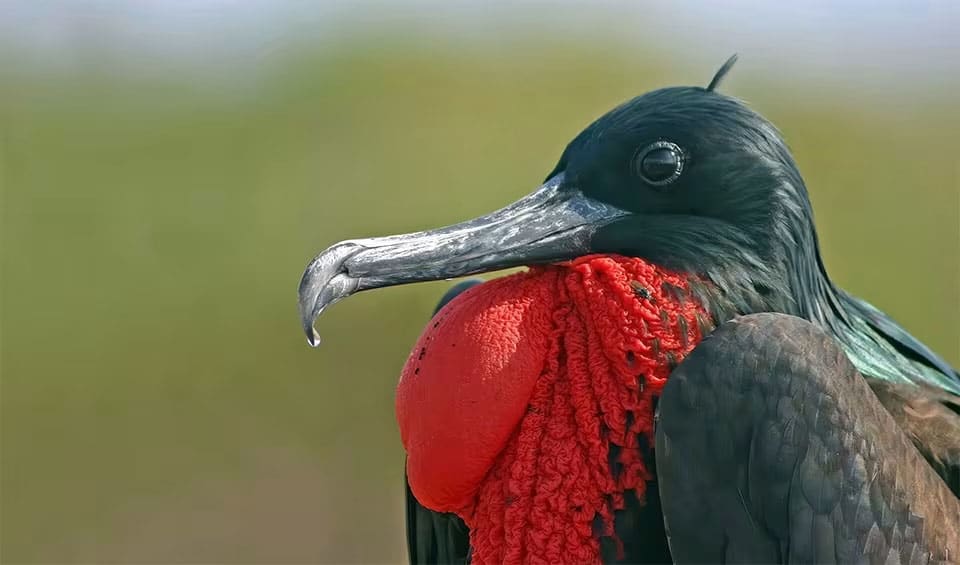Frigatidae – Frigatebirds & allies
Take their name from the infamously swift and maneuverable man-o-warships that once battled on the high seas
These birds are renowned for their exceptional flying abilities; they can stay airborne for weeks, covering vast distances over the open sea. Their wings are long and slender, perfectly adapted for dynamic soaring and riding updrafts, including those generated by ocean waves. This air mastery is the cornerstone of their survival, as they are aquatic birds that spend most of their lives over the sea.
Frigatebirds are often seen following schools of flying fish and other small marine animals. They are adept at tracking these fish, which, when threatened by underwater predators like tuna or dolphins, leap out of the water in an attempt to flee. At this moment, the frigatebirds, using their incredible speed and agility, swoop in to catch the fish mid-air. This ability to pluck prey from the air is a unique hunting strategy among seabirds, showcasing their specialized niche in the marine ecosystem.
These birds are also known for their kleptoparasitic behavior, which is essentially piracy on the wing. They often harass other seabirds, such as boobies and tropicbirds, compelling them to regurgitate their catch. The frigatebirds then deftly catch the falling food before it reaches the water. This opportunistic feeding strategy is perhaps necessary, given that frigatebirds have one significant limitation: they cannot land on the water to fish. Their feathers are not waterproof, and if they were to become waterlogged, it could impede their ability to fly, which is critical for survival.
Interestingly, frigatebirds have the lowest wing loading (wing area relative to body mass) of any bird, which facilitates their ability to remain aloft for extended periods and minimizes their energy expenditure while flying. However, this adaptation also means that they are relatively disadvantaged in windy conditions, as they can struggle to control their flight.
Genera in this family
Take their name from the infamously swift and maneuverable man-o-warships that once battled on the high seas


